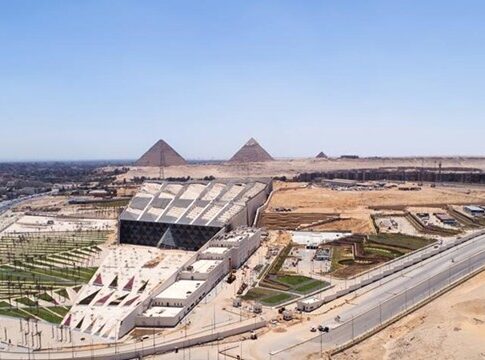The trial opening of a newly developed entrance to the iconic Giza Plateau has generated a mix of enthusiasm and controversy. The initiative, aimed at modernizing visitor access while preserving the site’s heritage, faced strong resistance from traditional horse and camel owners worried about their livelihoods.
In an effort to alleviate congestion and reduce pollution, the Egyptian government, in partnership with Orascom Pyramids Entertainment (OPE), has introduced a structured entrance on the Fayoum Highway, south of the Giza Pyramids. This change redirects traffic away from the traditional entrance near the Marriott Mena House, with eco-friendly electric vehicles designated to transport visitors around the site.
However, the introduction of these changes has not been seamless. Horse and camel owners blocked new access roads, voicing their concerns through protests, and temporarily halted the flow of tourist buses. These owners, accustomed to offering independent rides to tourists, are now required to operate within designated areas to minimize interference with the main transportation routes.
Despite the operational challenges, the new entrance recorded a remarkable 13,800 visitors in just four hours on its first day, a 120% increase from typical visitor numbers, as reported by the Ministry of Tourism and Antiquities. However, the excitement was marred by logistical issues, with visitors and guides taking to social media to express frustration over insufficient electric vehicles and disrupted access.
In response, OPE attributed delays to protests by animal owners, claiming these actions impeded transportation and threatened its operations. The company remains committed to working with the government to refine the system and has proposed allowing tourism companies to deploy their own electric buses for smoother transport.
The Ministry of Tourism countered claims of prolonged disruption, stating that animal owners were quickly relocated, allowing bus services to resume. Minister Sherif Fathy approved a temporary increase in diesel buses to address immediate transportation needs, while reaffirming a long-term commitment to expanding the electric vehicle fleet.
The Giza Plateau, home to the last surviving Wonder of the Ancient World, remains a cornerstone of Egypt’s tourism industry, a vital source of foreign revenue. In 2024, Egypt welcomed 15.7 million tourists, generating $14.1 billion in revenue, surpassing previous records. The government aims to attract 30 million visitors by 2028 through its national tourism strategy.
As the trial period continues, both government and private partners are focused on ensuring a balanced approach that respects traditional livelihoods while advancing modern infrastructure. The successful integration of these elements is seen as crucial for sustaining Egypt’s cultural heritage and enhancing its global tourism appeal.


